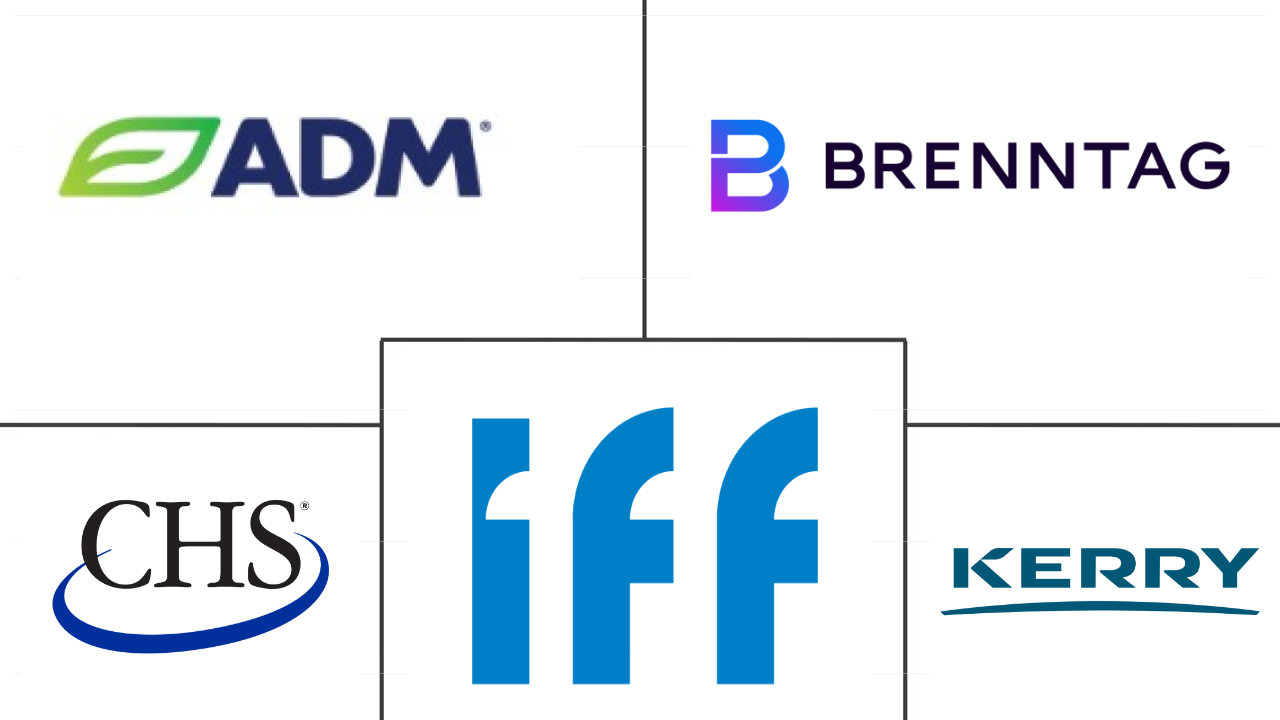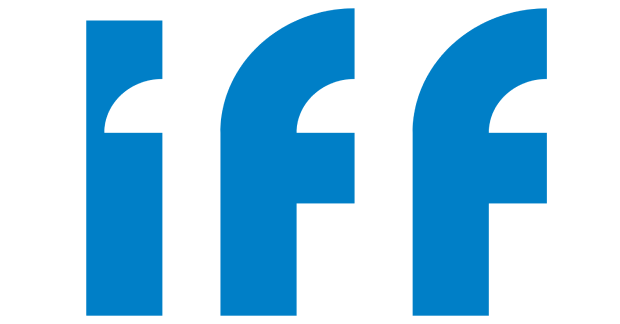Market Size of germany soy protein Industry
| Icons | Lable | Value |
|---|---|---|
|
|
Study Period | 2017 - 2029 |
|
|
Market Size (2024) | USD 296.5 Million |
|
|
Market Size (2029) | USD 354.3 Million |
|
|
Largest Share by End User | Animal Feed |
|
|
CAGR (2024 - 2029) | 3.63 % |
|
|
Fastest Growing by End User | Supplements |
|
|
Market Concentration | Low |
Major Players |
||

|
||
|
*Disclaimer: Major Players sorted in no particular order |
Germany Soy Protein Market Analysis
The Germany Soy Protein Market size is estimated at 296.5 million USD in 2024, and is expected to reach 354.3 million USD by 2029, growing at a CAGR of 3.63% during the forecast period (2024-2029).
296.5 Million
Market Size in 2024 (USD)
354.3 Million
Market Size in 2029 (USD)
3.42 %
CAGR (2017-2023)
3.63 %
CAGR (2024-2029)
Largest Market by Form
45.55 %
value share, Concentrates, 2023
Constant research and innovation, mainly in the field of animal feed, are supporting the application of soy protein concentrates, which is projected to drive the segment.
Largest Market by End User
51.86 %
value share, Animal Feed, 2023
Soy protein is widely used in the country's animal feed sector due to its distinct benefits like protein digestibility, appropriate amino acid profile, extended shelf life, etc.
Fastest Growing Market by Form
4.40 %
Projected CAGR, Textured/Hydrolyzed, 2024-2029
Hydrolyzed or textured soy proteins are gaining application mainly in meat alternative products as these are available in diced, chunky, or crumbled form for better use.
Fastest Growing Market by End User
8.20 %
Projected CAGR, Supplements, 2024-2029
The rising consumer focus on health and sports fitness is anticipated to drive the segment. Among all, the preference for soy in the sector is propelling segmental growth.
Leading Market Player
13.05 %
market share, International Flavors & Fragrances Inc., 2021

IFF's subsidiary, DuPont Nutrition & Biosciences, is constantly developing new soy proteins, and its differentiated product portfolio is the most important factor in its success.
Growing fitness industry with balance of amino acids in soy proteins influence the segmental revenue
- Animal feed remained the country's leading application sector for soy protein, and it is projected to register a CAGR of 3.84% by value in the forecast period. Manufacturers are constantly looking for novel protein ingredients that are high-quality, cost-effective, and label-friendly, driving the growth of soy protein. Soybean meal is the main source of protein and amino acids used in animal feed formulations in the region. Soy protein powders provide both nutritional and functional benefits in companion animal foods, calf milk replacers, young animal feed (such as feed for piglets), and aquaculture diets. It is especially suited for liquid and dry food applications where low antigenicity and easy digestibility are required.
- The F&B segment holds the second major market share and is projected to register a CAGR of 2.96% by value in the forecast period. Soy proteins have a wide range of applications in meat- and dairy-alternative products. Soy protein was widely used in meat alternatives due to the industry's ongoing innovation. Flexitarians accounted for 31.1% of the German population in 2021, making up a group of approximately 16.71 million people. The increase in vegan and flexitarian consumers in the region boosted the soy protein demand in the meat alternative products industry.
- The supplements segment is anticipated to be the fastest-growing end-user segment in the market, projected to register a CAGR of 7.93% by volume during the forecast period. In 2021, there were more than 9,492 thousand health and fitness clubs in Germany. The fitness industry is rapidly increasing the usage of various protein ingredients in nutritional supplements used for muscle or tissue repair after workouts. Thus, soy protein powders are gaining more demand in the market.
Germany Soy Protein Industry Segmentation
Concentrates, Isolates, Textured/Hydrolyzed are covered as segments by Form. Animal Feed, Food and Beverages, Supplements are covered as segments by End User.
- Animal feed remained the country's leading application sector for soy protein, and it is projected to register a CAGR of 3.84% by value in the forecast period. Manufacturers are constantly looking for novel protein ingredients that are high-quality, cost-effective, and label-friendly, driving the growth of soy protein. Soybean meal is the main source of protein and amino acids used in animal feed formulations in the region. Soy protein powders provide both nutritional and functional benefits in companion animal foods, calf milk replacers, young animal feed (such as feed for piglets), and aquaculture diets. It is especially suited for liquid and dry food applications where low antigenicity and easy digestibility are required.
- The F&B segment holds the second major market share and is projected to register a CAGR of 2.96% by value in the forecast period. Soy proteins have a wide range of applications in meat- and dairy-alternative products. Soy protein was widely used in meat alternatives due to the industry's ongoing innovation. Flexitarians accounted for 31.1% of the German population in 2021, making up a group of approximately 16.71 million people. The increase in vegan and flexitarian consumers in the region boosted the soy protein demand in the meat alternative products industry.
- The supplements segment is anticipated to be the fastest-growing end-user segment in the market, projected to register a CAGR of 7.93% by volume during the forecast period. In 2021, there were more than 9,492 thousand health and fitness clubs in Germany. The fitness industry is rapidly increasing the usage of various protein ingredients in nutritional supplements used for muscle or tissue repair after workouts. Thus, soy protein powders are gaining more demand in the market.
| Form | |
| Concentrates | |
| Isolates | |
| Textured/Hydrolyzed |
| End User | ||||||||||||
| Animal Feed | ||||||||||||
| ||||||||||||
|
Germany Soy Protein Market Size Summary
The Germany Soy Protein Market is experiencing a steady expansion, driven by the increasing demand for high-quality, cost-effective, and label-friendly protein ingredients. The animal feed sector remains the dominant application area, with soy protein being a crucial component in formulations for companion animals, young livestock, and aquaculture diets due to its nutritional and functional benefits. The food and beverage segment also holds a significant share, with soy protein being widely used in meat and dairy alternatives, catering to the growing number of vegan and flexitarian consumers in Germany. The supplements segment is anticipated to be the fastest-growing, fueled by the rising popularity of protein-rich nutritional supplements in the fitness industry. This growth is supported by the broader trend of consumers shifting towards vegan diets, driven by the functional efficiency and cost competitiveness of plant-based proteins like soy.
The market landscape is characterized by a fragmented structure, with major players such as Archer Daniels Midland Company, Brenntag SE, CHS Inc., International Flavors & Fragrances Inc., and Kerry Group PLC holding a significant share. The demand for clean-label and natural ingredients is prompting manufacturers to innovate and develop new products to meet consumer preferences and regulatory standards. The increasing production of soybeans in Germany, alongside the rising acceptance of genetically modified crops, underscores the growing importance of soy protein in the region. Government policies aimed at reducing diseases linked to meat consumption are further encouraging the shift towards plant-based diets, thereby boosting the soy protein market. The market's growth is also supported by strategic initiatives from companies like Fuji Oil Group and DuPont Nutrition & Biosciences, which are expanding their plant-based food solutions and ingredient portfolios to cater to the evolving consumer demands.
Germany Soy Protein Market Size - Table of Contents
-
1. MARKET SEGMENTATION (includes market size in Value in USD and Volume, Forecasts up to 2029 and analysis of growth prospects)
-
1.1 Form
-
1.1.1 Concentrates
-
1.1.2 Isolates
-
1.1.3 Textured/Hydrolyzed
-
-
1.2 End User
-
1.2.1 Animal Feed
-
1.2.2 Food and Beverages
-
1.2.2.1 By Sub End User
-
1.2.2.1.1 Bakery
-
1.2.2.1.2 Beverages
-
1.2.2.1.3 Breakfast Cereals
-
1.2.2.1.4 Condiments/Sauces
-
1.2.2.1.5 Dairy and Dairy Alternative Products
-
1.2.2.1.6 Meat/Poultry/Seafood and Meat Alternative Products
-
1.2.2.1.7 RTE/RTC Food Products
-
1.2.2.1.8 Snacks
-
-
-
1.2.3 Supplements
-
1.2.3.1 By Sub End User
-
1.2.3.1.1 Baby Food and Infant Formula
-
1.2.3.1.2 Elderly Nutrition and Medical Nutrition
-
1.2.3.1.3 Sport/Performance Nutrition
-
-
-
-
Germany Soy Protein Market Size FAQs
How big is the Germany Soy Protein Market?
The Germany Soy Protein Market size is expected to reach USD 296.46 million in 2024 and grow at a CAGR of 3.63% to reach USD 354.34 million by 2029.
What is the current Germany Soy Protein Market size?
In 2024, the Germany Soy Protein Market size is expected to reach USD 296.46 million.

